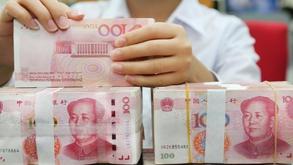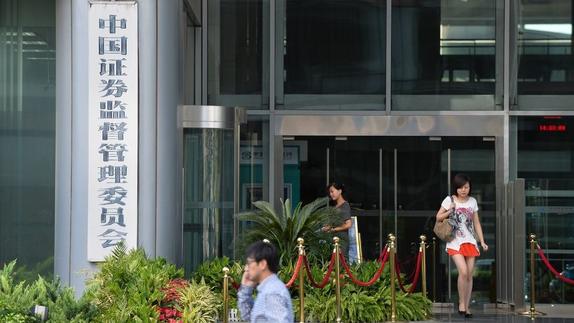 In this undated photo, a Chinese clerk counts renminbi yuan banknotes in Nantong, East China's Jiangsu province. (PHOTO / IC VIA CHINADAILY.COM.CN)
In this undated photo, a Chinese clerk counts renminbi yuan banknotes in Nantong, East China's Jiangsu province. (PHOTO / IC VIA CHINADAILY.COM.CN)
Efforts will be made to introduce novel futures products themed on carbon emissions rights, logistics and indexes in China so that the financial sector can better serve the real economy and address the country's major development strategies, said China Securities Regulatory Commission Vice-Chairman Fang Xinghai at a forum on Tuesday.
The futures market should be steadily opened up by making more futures products accessible to foreign investors, said China Securities Regulatory Commission Vice-Chairman Fang Xinghai. Efforts should be made to advance international supervision cooperation and explore new opening-up models with attendant risk management measures in place
Fang made the comments at the three-day 2022 China (Zhengzhou) International Futures Forum, which kicked off online on Tuesday. He stressed that futures product portfolios should be enriched to address China's major development strategies such as the formation of a unified domestic market and green transformation.
Meanwhile, the futures market should be steadily opened up by making more futures products accessible to foreign investors, he said. Efforts should be made to advance international supervision cooperation and explore new opening-up models with attendant risk management measures in place. In this way, China can become more internationally influential in terms of commodity pricing, he said.
ALSO READ: China adopts law on futures, derivatives
In May 2021, the CSRC approved a total of 16 futures products to be traded on the Guangzhou Futures Exchange, which was officially launched on April 19, 2021. Carbon emissions rights futures were one of the products scheduled to be rolled out on the newly unveiled exchange.
Globally, trading of carbon emissions rights futures has been conducted via the Intercontinental Exchange, Chicago Mercantile Exchange and European Energy Exchange, among others, with the European Union Allowance and Certified Emission Reduction serving as major trading targets.
The Guangdong Financial Supervisory Authority released an action plan on Aug 2 to support the listing of carbon emissions rights, electricity, commodity indexes, silicon metals, polysilicon and lithium futures on the Guangzhou Futures Exchange.
ALSO READ: Foreign capital to have wider access to China's futures market
Hong Lei, chairman of the China Futures Association, said at the Tuesday forum that product supply and related trading mechanisms should be further optimized so that the Chinese futures market will be more attractive to investors.
 This undated file photo shows the entrance of the China Securities Regulatory Commission in Beijing, China. (LI XIN / XINHUA)
This undated file photo shows the entrance of the China Securities Regulatory Commission in Beijing, China. (LI XIN / XINHUA)
In May 2021, the CSRC approved a total of 16 futures products to be traded on the Guangzhou Futures Exchange, which was officially launched on April 19, 2021. Carbon emissions rights futures were one of the products scheduled to be rolled out on the newly unveiled exchange
In addition, the spot trading market should be further consolidated. More industrial clients should participate in futures trading so that the function of hedging can be truly realized. Intermediaries should also improve their services in terms of pricing and trading, Hong said.
As calculated by the CSRC, the total value of the Chinese futures market exceeded 1.6 trillion yuan ($231 billion) as of the end of August, with total positions exceeding 36 million lots-both marking record highs. Nearly 2.98 billion lots of commodity futures were traded in the first half, accounting for 69 percent of the world's total and helping China to secure its position as the world's largest commodity futures market.
Yin Zhongqing, deputy director of the Finance and Economics Committee of the National People's Congress, said the internationalization of the Chinese derivatives market is at a very early stage. A large number of international investors still hold wait-and-see attitudes concerning investing in China's onshore futures market.
READ MORE: China stresses risk prevention amid capital market opening-up
In this sense, the country's Futures and Derivatives Law, which took effect on Aug 1, is set to connect global common practices and lay the systematic groundwork for the opening-up of the Chinese derivatives market.
"Internationalization and opening-up are indispensable to enhance the competitiveness of the derivatives market," Yin said.


